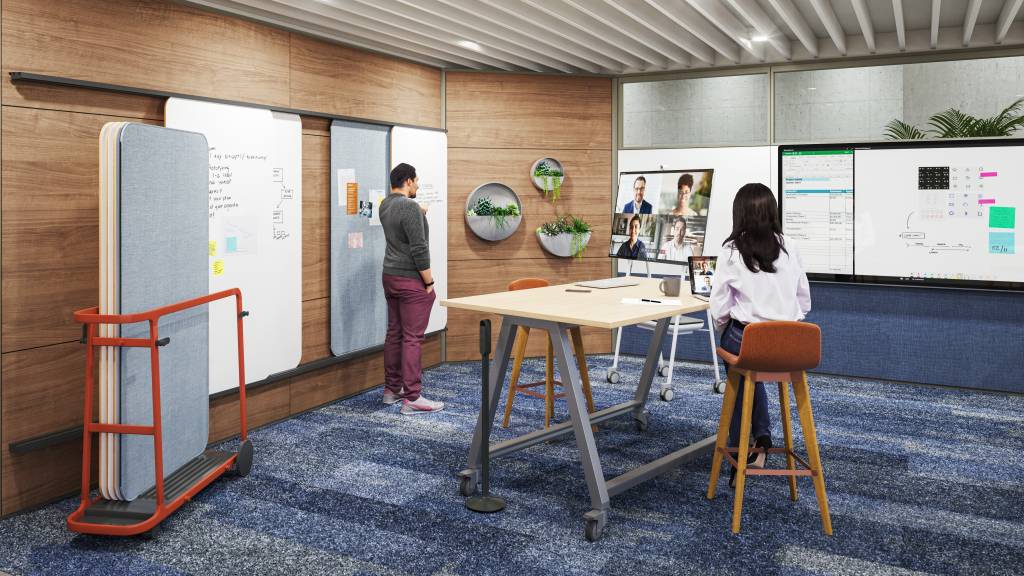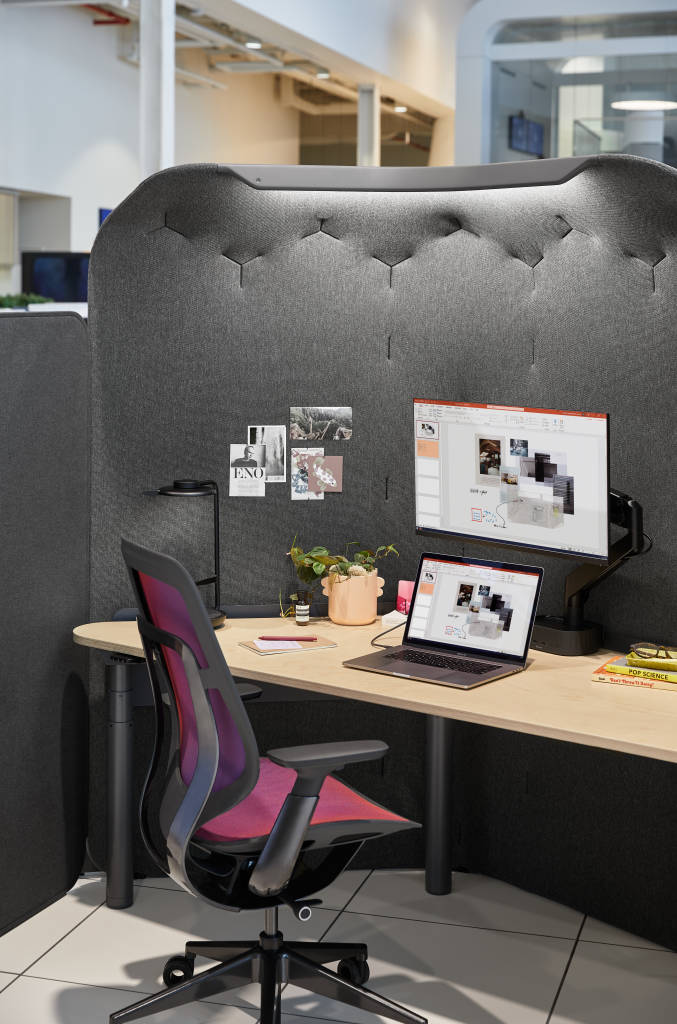What People Who’ve Gone Back to the Office Really Need
New Steelcase research is pinpointing what people who’ve already returned to the office want now from their workplace.
WHEN. HOW. WHY.
As the Omicron surge recedes and society turns an apprehensive eye toward the possibility of future Covid-19 variants, “when, how and why” are the three critical decisions companies are wrestling with when it comes to bringing workers back to the office. While uncertainty swirls for some, other organizations have already welcomed people back – either in phases or altogether. So, what’s it really like? Some offices are wrapped in a time capsule still clinging to a desk calendar from early 2020 – but they can evolve and better serve people’s emerging needs in a new era of hybrid work.
To better understand what people want, need and expect, Steelcase surveyed nearly 5,000 workers in 11 countries. Researchers were able to isolate the responses from people who’ve already returned to the office after working from home to learn their perspective about what they really need in the workplace. These three key learnings may help organizations who’ve already returned and those still making the tough decisions on “when, how and why.”
Explore the Steelcase Global Report: Get key findings about what people value more now and how the workplace needs to change to support hybrid work.
Download the Steelcase Global Report
1.HYBRID COLLABORATION IS KEY
70% say hybrid collaboration spaces are more important now
Research suggests collaboration between in-person and remote colleagues will be a defining aspect of the new workplace. In fact, those who’ve already returned are experiencing what a pain point it can be. Many people now need to connect virtually more frequently whether it’s one-on-one or many-to-many. Hybrid collaboration spaces are in high demand. Without enough spaces that support technology (power, cameras, lighting, acoustics), people may feel like they’re disrupting nearby colleagues or can’t hear and be heard or see and be seen. The need for space that can flex easily between group work and individual work and include video call and digital meeting technology is a top need for former work-from-home employees who have returned to the office, even more so than the global average.

2. IS YOUR OFFICE TIRED OR WIRED?
66% say single-person enclaves with tech hook-ups for remote meetings are more important than pre-pandemic
If hybrid collaboration spaces win the workplace gold medal, tech-infused, easy-to-operate personal spaces are the silver medalists in the new world of work. According to Steelcase research, among the most important elements a workplace should provide is access to tools and technology and the ability to collaborate with others effectively. That’s where a single-person enclave comes into play. These are spaces that can be assigned, scheduled or open to all; a place people can access easily and transition quickly from social interactions to a controlled environment where video conferencing and hybrid one-on-ones can take place seamlessly.
3. THE ‘PRIVATE’ SECTOR
62% of people who’ve returned to the office say privacy remains more important now than pre-pandemic

No doubt collaboration is a key component of the hybrid office, but focus time – and space – are precious resources. People need a space to call their own; to get comfortable, connect with co-workers on a video call and get a little control over their environment. That’s why workers who have returned to the office after working from home rank privacy as the number three ‘ask’ of their office today. In many ways, privacy equals comfort, especially when it comes to hybrid and virtual collaboration. Spaces that are too small, or too open, can spell discontent for the return-to-office worker.
Employees surveyed overwhelmingly (73%) say that a space that’s open can be too noisy or make them feel like they’re interrupting their co-workers. They also seek visual privacy, and a place that, like personal enclaves, is well connected to technology and allows easy accessibility for virtual collaboration.
The pandemic has created a lasting shift in how and where work is being done. Workers have greater leverage, choice and control when it comes to remote work. Studies show employees are at their best when they like working from their office, but research also indicates that it will take a more creative, inclusive and supportive workplace to entice people back, as well as maintain and attract new talent.
Download the Global Report


